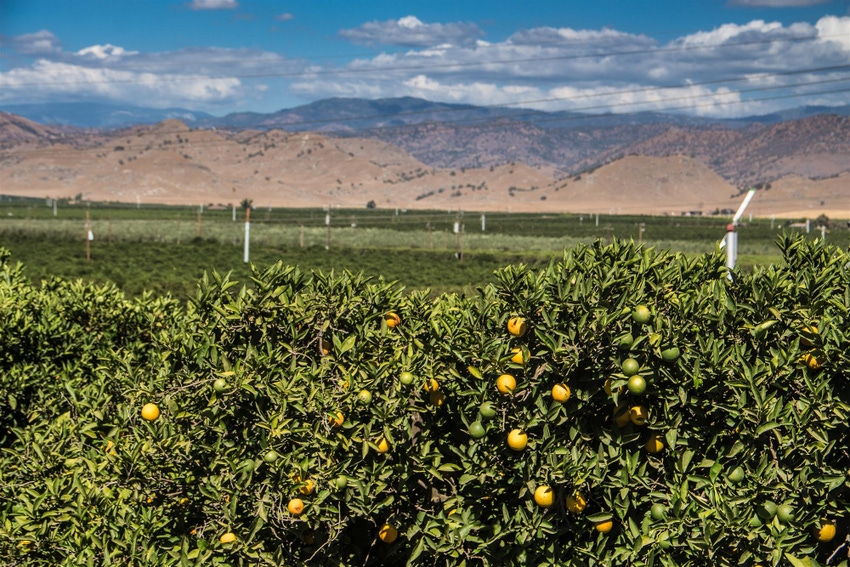
As Central Valley freeze events go 2016 will not be the conversation starter that years like 2007, 1998 or 1990 can be. Still, California growers spent over $25 million in December to protect their crops from a post-rain cold snap.
Though it was cold in the San Joaquin Valley – down to 23 degrees in parts of the of the Valley, according to the National Weather Service – it wasn’t the ice-box along the eastern foothills from Fresno County to Kern County to cause problems with the fruit.
Most of the state’s fresh citrus is grown along the southeastern edge of the San Joaquin Valley in the counties of Fresno, Tulare and Kern.
Lows from 28-32 degrees were reported in the main citrus-growing region. The freeze comes after much of the thin-skinned Clementine crop has been harvested, though other thin-skinned, easy-peel Mandarin varieties remain on the trees and could be susceptible to freezing temperatures.
Short-lived temperatures like this can actually be ideal for maturing fruit at this point in the season, says Alyssa Houtby, public affairs director with the Exeter-based California Citrus Mutual.
Cold temperatures for short periods of time can slow the maturation process in citrus, allowing fruit to store longer on the tree and maintain its external quality, color and flavor.
“We’re much more concerned with the duration of these temperatures,” she said.
Temperatures in the mid-20s for several hours can damage ripening fruit. In this case, temperatures hovered in the upper 20s to low 30s.
Citrus farmers were able to employ wind machines, which mixed the air enough to avoid cold damage.
“Some of our growers in Kern County didn’t even turn on their wind machines,” she said alluding to how warm it remained in certain growing regions of the San Joaquin Valley.
Those with Mandarins still on the tree reported using wind machines for about 16 hours over the weekend of Dec. 17-18, she said. The thicker-skinned Navel orange crop, which is more cold-tolerant, required about five hours of frost-protection over a fraction of the Valley’s Navel acreage.
Lemons tend to be a bit more cold-tolerant as well and reported no problems, Houtby said.
Growers in this case employed wind machines, which can boost temperatures in the grove by about five degrees. Winter irrigation is another tool growers can use, which can also help boost temperatures.
The San Joaquin Valley’s citrus crop is valued at about $2.5 million. Much of it is shipped as fresh-market fruit.
California Citrus Mutual is a non-profit, voluntary citrus trade association. Its 2,500 members make up about 75 percent of the state’s $3.3 billion citrus industry.
About the Author(s)
You May Also Like






